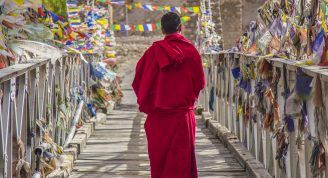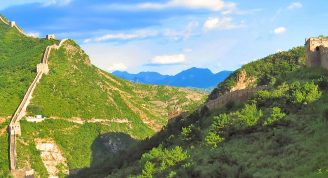Description
Unlock the secrets of the Silk Road on this immersive journey across Central Asia. From Beijing all the way to Tashkent, this epic 31-day trip heads west across China, showcasing stunning relics, dynastic palaces, Muslim minarets, hidden grottoes and rock-cut Buddhist masterpieces. Continuing into Kyrgyzstan and on to the heartland of Uzbekistan, be dazzled by Central Asia proper: the tranquil landscape of Song-Kol Lake; Solomon’s Throne in historic Osh; and the superb mosques of Samarkand. Full of warmly hospitable locals, spectacular expanses and constant evocations of a legendary past, this is the Silk Road at its magical best.
- Follow the route of the ancient Silk Road, travelling in the footsteps of countless generations of nomads and traders
- Discover the unreal, rainbow-coloured landscape of Zhangye, a UNESCO site that looks like countless pots of bright paint have been spilled across sandstone mountains. You won't be able to put your camera away!
- Uncover the ‘other terracotta warriors’ in Xi’an’s Hanyangling Mausoleum, an authentic and more personal burial site that’s home to tens of thousands of buried pottery figures
- Experience the unique atmosphere of Kashgar’s Sunday Market
- Central Asia is a fascinating and unique mix of ancient Silk Road culture, Soviet influence and striving to redefine nations post independence. Geographically and for a time historically, it is the real centre of Asia.
- The much-photographed Registan in Samarkand is one of the true pinnacles of Islamic architecture. You'll be wowed by the scale, grandeur and beauty of the monuments to iconic figures such as Tamerlane and the Persian influenced madressas, mosques and mausoleums.
- Experience for yourself the legend that is Central Asian hospitality - there's really nothing like being welcomed into a local home or yurt for a meal, chatting with stall holders at bazaars or simply marvelling at the sights alongside locals.
- Kyrgyzstans mountains are its monuments and its majesty. The landscapes here will stay with you long after the journey is over.
- Marvel at the beautiful Song Kol Lake, where in mid-summer you may see flocks of sheep, goats and herds of horses watched over by nomadic herdsmen and their families.
- Stay overnight in a yurt lakeside and live like the locals have for centuries in these portable, felt lined traditional tents.
- Reflect on the important role horses have played in the traditional Kyrgyz nomadic life style while witnessing horseback sports like odarysh (wrestling on horseback), tiyin-enish (where riders try to pick up coins at full gallop) or kok-baru (goat polo).








